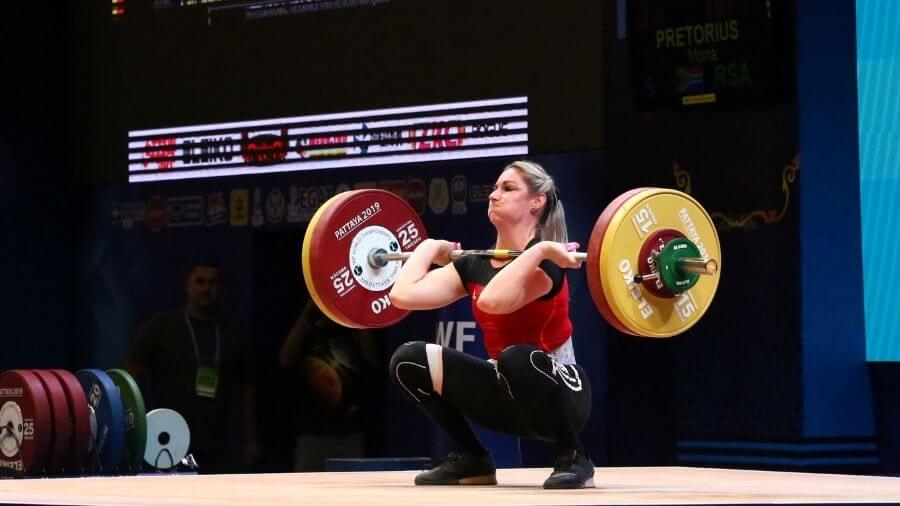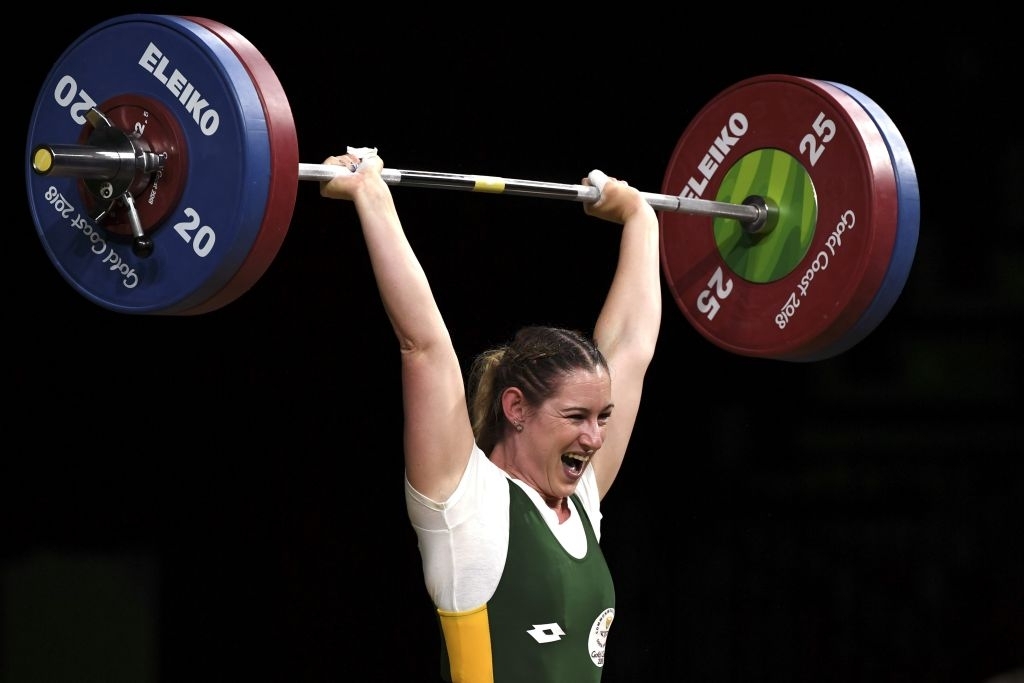The power clean and hang clean are often used interchangeably. Yet they are two distinctly different exercises suited for different athletes.
The main differences between the power clean and hang clean are the starting and catch positions. The power clean starts from the floor, and the hang clean from above the knee. The power clean is caught above parallel, and the hang clean is caught in a full squat position.
However, these aren’t the only differences. So, what else is different, and should you power clean or hang clean in your training?
Table of Contents
Power Clean vs. Hang Clean: What’s The Difference?
Starting Position
The first significant difference between the power and hang clean is the starting position. The power clean starts from the floor, while the hang clean starts from the hang position. Typically, slightly above the knee.
The starting position may differ with the hang clean as there are multiple hang positions. However, the program will specify if the hang position is high, mid-thigh, or below the knee.
Catch Position
The catch position is the second major difference. A lift must be caught above parallel for a lift to be a power. Anywhere with the thighs being parallel with the floor is considered a full lift and not a power.
On the other hand, the hang clean is caught below parallel in the full squat position. The CrossFit community often refers to the hang clean as the hang squat clean to denote the full catch position. Unfortunately, the hang clean is often used to describe a hang power clean.
This is not correct, and a hang clean and hang power clean are two different exercises you’d use for various purposes.
Transfer To Clean
Both the power clean and hang clean transfer equally to the clean. Both reinforce the full extension of the pull and pulling under the bar. If you have a problem cutting your pull short and rushing under the bar, both the power clean and hang clean are excellent options.
Pulling Strength
The power clean is the clear winner for improving pulling strength since it is the full movement from the floor. The hang clean will strengthen the second pull position but misses the crucial phase of the first pull.
Power Clean vs. Hang Clean Muscles Worked

The power clean and hang clean work the same muscles of the calves, hamstrings, quads, glutes, erector spinae, lower and upper back, traps, shoulders, and arms. The power clean places more stress on the legs than the hang clean during the pull, while the hang clean places more emphasis on the legs in the squat.
Power Clean vs. Hang Clean For Football
With a gun to my head, I would prescribe the power clean over the hang clean for football. Mainly because of the extra mobility requirements of the hang clean to get into the deep squat position with the front rack.
Also, in my experience, there is no need for an athlete to perform the full lifts. It serves no extra benefit to catch in the full squat position when the goal is to enhance speed and power.
Personally, I rarely prescribe the power clean or hang clean for athletes like football players. They can get similar results performing various jumps, throws, and plyometrics without learning a complex exercise.
Power Clean vs. Hang Clean For Vertical Jump
It is well known Olympic Weightlifting can enhance vertical jump performance [1]. If you are picking between the power clean and hang clean, the power clean is a better choice to transfer to vertical jump.
Weightlifting is often used to enhance vertical jump because it enhances vertical force production at speed. This is an important attribute that needs to be developed in lesser trained athletes.
However, a high vertical jump is more than raw power. It’s the sequencing of muscle activation and joint movement. Unfortunately, the power clean has very different muscle activation and joint movement patterns to the vertical jump reducing the transfer over time [2].
Initially, feel free to use the power clean. But jumping activities trump Weightlifting for enhancing vertical jump.
Power Clean vs. Hang Clean For Athletes
The power clean is superior to the hang clean for athletes in my experience. You don’t need to teach the complex movement of pulling under the bar in the squat position. You’ll also see faster speeds as you need to pull the bar further.
Again, performing either the power or hang clean is unneeded as jumps, throws, and plyometrics are easier to express maximum outputs.
Should You Power Clean or Hang Clean?
Whether you power clean or hang clean comes down to your sport. If you are a Weightlifter, you will do both, whether that’s in the same training week, cycle, or different training cycles. As an athlete, I recommend sticking to the power clean. It is easier to learn and doesn’t require as much mobility.
Reference
1. Hackett, D., Davies, T., Soomro, N., & Halaki, M. (2016). Olympic weightlifting training improves vertical jump height in sportspeople: a systematic review with meta-analysis. British journal of sports medicine, 50(14), 865-872.
2. MacKenzie, S. J., Lavers, R. J., & Wallace, B. B. (2014). A biomechanical comparison of the vertical jump, power clean, and jump squat. Journal of sports sciences, 32(16), 1576-1585.

